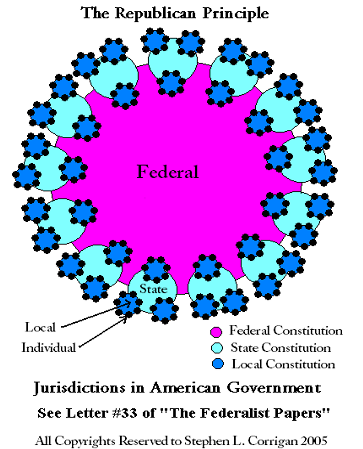The same "republican principle" applies when the People of different jurisdictions within a given State come together as an association and agree upon a written state constitution that protects the safety and sovereignty of each small politic.
A State constitution is similiar to the constitutions of the smaller associations in that the powers given to the elected leaders are limited. The laws passed by the state, that are pursuent to the state constitution, are supreme. However, the elected state leaders can not interpret their right to govern as a right to interfer with the laws that regulate the conduct of citizens within a smaller local community.
Every political constitution in America is a law defining the limits of power granted to the elected leaders of that politic. In other words, the elected public servants of a particular politic have the limited power to govern the constituents of their politic pursuant to the constitutional powers enumerated to them by their constituents. The laws created by the elected leaders of that association shall be considered as supreme and shall apply to all persons while in that jurisdiction. The constitutents of the association are the members. Thus the jurisdiction of an association includes all the area of land where the constituents reside.
Whenever U.S. citizens come together in the area of the State in which they reside and agree upon a written constitution for the purpose of protecting and exercising their civil rights, as defined in the Declaration of Independence, they establish a jurisdiction. The laws passed in that local politic will be the supreme regulator of their conduct.
Every level of government is seen as a political association. Each association has a job description or law for its elected leaders. This job description or constitution is created by the constituents of the politic with enumerated powers. The shaded area within any given circle represents the government created by the constituents of that particular association. It also represents the limits expressed as enumerated powers of that association's jurisdiction.

